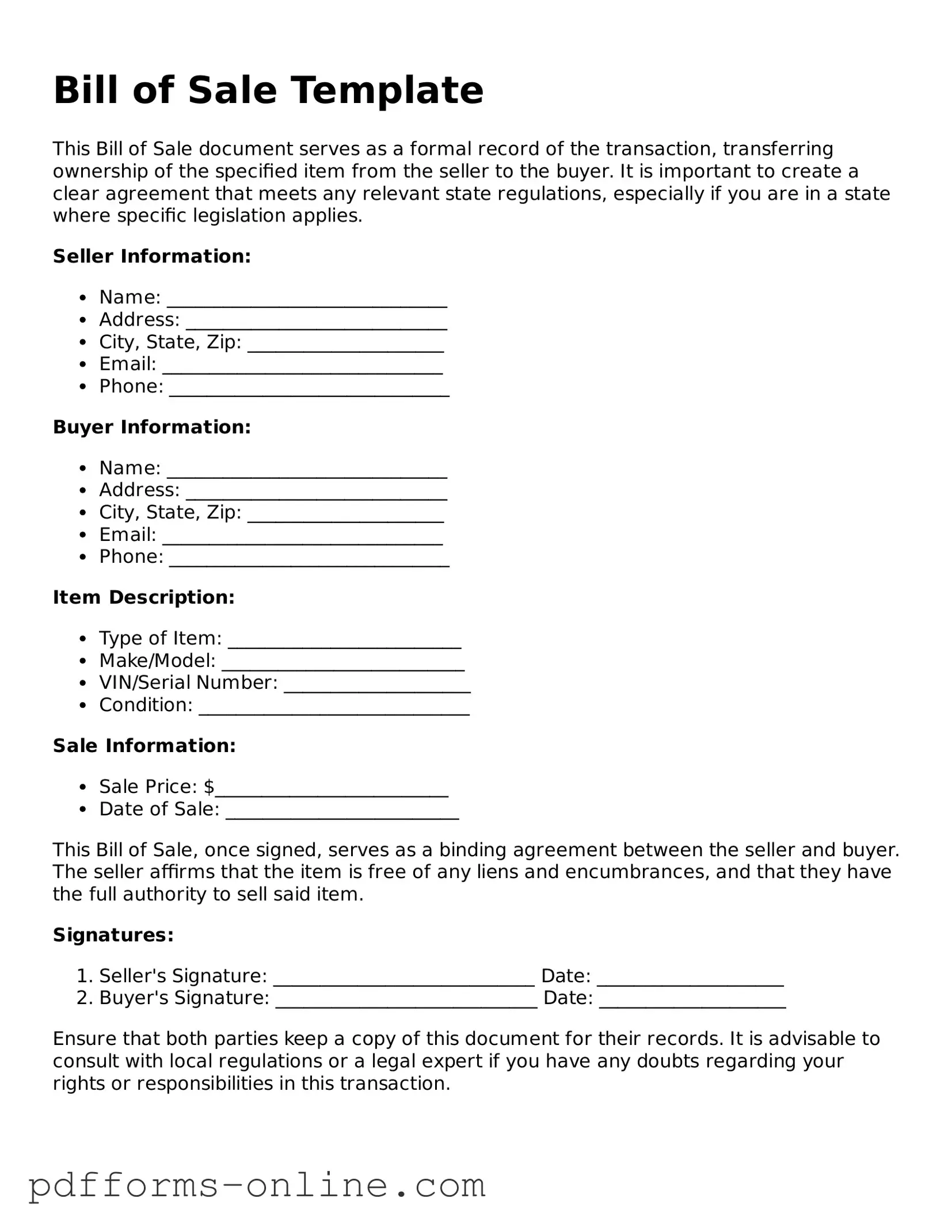A purchase agreement is similar to a Bill of Sale as it serves as a formal contract between a buyer and a seller. This document outlines the terms of the sale, including the item being sold, its price, and the conditions of the transaction. Unlike a Bill of Sale, which is often a simple transfer of ownership, a purchase agreement may include additional details such as warranties, contingencies, and payment terms, making it more comprehensive.
A lease agreement can also resemble a Bill of Sale in that it establishes a legal relationship between two parties regarding the use of property. While a Bill of Sale transfers ownership, a lease agreement allows one party to use property owned by another for a specified period in exchange for payment. Both documents require clear identification of the parties involved and the item or property in question.
A title transfer document is closely related to a Bill of Sale, especially in vehicle transactions. This document is crucial for officially transferring ownership of a vehicle from one party to another. While the Bill of Sale serves as proof of the sale, the title transfer document is necessary for updating the vehicle’s registration and ownership records with the state, ensuring that the new owner is recognized legally.
An invoice can be compared to a Bill of Sale as both serve as records of a transaction. An invoice details the goods or services provided, their costs, and payment terms, while a Bill of Sale confirms that a sale has occurred. Invoices are often used in business transactions, whereas Bills of Sale are more common in personal sales, such as vehicles or equipment.
A receipt is another document similar to a Bill of Sale, as both serve as proof of a transaction. A receipt typically confirms payment for goods or services rendered, while a Bill of Sale documents the transfer of ownership. Both documents provide essential information, such as the date of the transaction, the amount paid, and a description of the item sold.
A warranty deed is akin to a Bill of Sale in real estate transactions. It conveys ownership of property from one party to another, ensuring that the seller has the right to sell the property and that it is free from liens. While a Bill of Sale is used for personal property, a warranty deed specifically addresses real estate, providing a legal guarantee of ownership transfer.
An assignment agreement is similar to a Bill of Sale when it comes to transferring rights or interests in a property. This document allows one party to transfer their rights to another, often used in business contexts for intellectual property or contractual rights. Both documents require clear identification of the parties and the subject of the transfer, ensuring that the new party is recognized in the transaction.
A promissory note may also resemble a Bill of Sale in certain transactions, particularly when financing is involved. This document outlines a borrower's promise to repay a loan, detailing the amount borrowed, interest rates, and repayment terms. While a Bill of Sale confirms ownership transfer, a promissory note establishes a financial obligation that may accompany the sale.
Lastly, a sales contract shares similarities with a Bill of Sale as both documents formalize a transaction between a buyer and a seller. A sales contract typically includes more detailed terms and conditions, including delivery dates and payment methods. In contrast, a Bill of Sale primarily serves as a record of ownership transfer, making it simpler but equally important in the transaction process.
